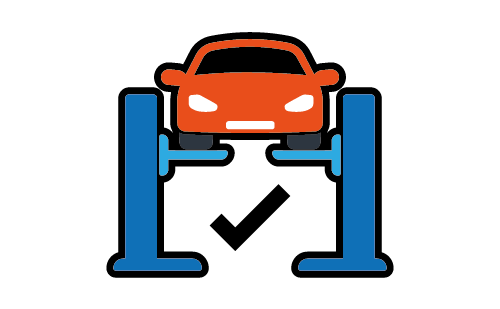Car CO2 emissions checker
Enter any UK registration number into our FREE CO2 emissions checker tool.
We will provide you with an instant estimate of the vehicle’s CO2 emissions.


What is CO2 – and why does it matter?
Carbon dioxide is a greenhouse gas found in the Earth’s atmosphere that comprises one part carbon (‘C’) and two parts oxygen (‘O2’).
According to a NASA estimate – prior to the Industrial Revolution, CO2 concentration in the Earth’s atmosphere was around 280 ppm (parts per million). Today, this figure has exceeded 400ppm – and the rise is inextricably linked to emissions from human activity.
CO2 and the greenhouse effect
In spite of their negative reputation, the greenhouse gases responsible for creating the ‘greenhouse effect’ are actually integral to the survival of life on Earth. After all, without our atmosphere (i.e. ‘the greenhouse’), the sun’s energy would strip away all oxygen. Furthermore, heat from the sun’s rays would evaporate at night, freezing everything and rendering our planet uninhabitable.
CO2 accounts for approximately two-thirds of our greenhouse gas emissions (methane and nitrous oxide are also major contributors). Unfortunately, as we contribute ever-greater greenhouse gas emissions, this can lead to adverse effects such as global warming, rising sea levels, floods, extreme weather and food shortages.

How do cars produce CO2 emissions?
Petrol and diesel cars use combustion engines. Gasoline contains both carbon and hydrogen atoms. During combustion, the carbon (C) from the fuel mixes with the oxygen (O2) in the air to produce carbon dioxide (CO2).

What is a good CO2 emissions reading for a car?
If your car emits less than 75g of CO2 per kilometre (g/km) from its tail pipe, it is classed as an Ultra-low Emission Vehicle (ULEV), which makes you eligible for the 100% ‘cleaner vehicle discount’ when driving in London’s Congestion Charge zone.
However, you must apply to TFL (Transport for London) and register your vehicle before receiving this discount.
How can I reduce my car’s emissions?
To reduce your car’s emissions:
- Use premium fuel.
- Change your oil at regular intervals.
- Change the air filter.
- Make sure your tyre pressure is in the optimal range.
- Use your AC as little as possible.
- Try hypermiling techniques.
- Walk or use public transport when possible.
CO2 emissions and car tax
Vehicle Excise Duty (VED) (also known as ‘car tax’) is an annual tax that applies to many UK drivers. The amount of car tax you pay depends on your vehicle’s CO2 emissions. Some vehicles are exempt from car tax, including many classic cars - and fully-electric cars with a list price under £40,000.
Read our guide to UK car tax bands for a full breakdown of the current UK car tax thresholds.
If you are currently paying a high rate of car tax, selling your car and making the switch to a more CO2-friendly model could help to save you money. Enter your current reg number into our free car valuation tool to find out how much your car could be worth in an instant.
CO2 regulations and fines for car manufacturers
According to current UK legislation, car manufacturers must achieve an average CO2 figure of 95g/km from official tests across all the cars they sell.
Manufacturers failing to meet this requirement will be charged €95 (around £83) for each gram per km their CO2 average exceeds the target figure - multiplied by the number of cars they sold that year.
CO2 and the future of car manufacturing
It is expected that CO2 emissions targets – and the looming 2030 petrol and diesel ban will continue to drive car manufacturers towards producing more electric vehicles for the UK market in the near future.
Additionally, incentives such as lower running-costs, improvements to charging infrastructure and government grants towards EV running costs should also encourage more UK drivers to make the switch to electric.
Frequently asked questions
A fully-electric vehicle doesn’t produce CO2, as it doesn’t use a combustion engine – or emit exhaust gas from the onboard source of power.
Hybrid electric cars emit low levels of CO2 when using their combustion engine- typically 15-30% less than equivalent non-hybrid models.
Like full hybrid cars, ‘mild hybrids’, use an electric motor in conjunction with a combustion engine. However, unlike full hybrids, mild hybrids cannot run on electric power alone. Instead, the electric motor in a mild hybrid serves only to assist the engine when braking or accelerating.
Cars with combustion engines emit a variety of gases including:
Carbon dioxide (CO2), carbon monoxide (CO), particulate matter (airborne soot and metal particles from diesel engines), benzene (C6H6), hydrocarbons (due to incomplete combustion) – and sulphur dioxide (SO2).
Your car’s CO2 emissions have no bearing on whether your car is ULEZ compliant. NOx (Nitrogen Oxides) output is the metric that determines compliance. To qualify for ULEZ exemption, a car must emit less than 0.08g/km of NOx.
A clogged or faulty catalytic converter is a major cause of MOT failure. The catalytic converter is responsible for converting hazardous chemicals produced by the combustion engine into less harmful pollutants. Therefore, a poor-performing catalytic converter will increase a car’s emissions.
If your car fails its MOT on emissions, you may need to have the catalytic converter replaced to bring the vehicle up to the minimum emissions standard before it is re-tested at an MOT centre.
Replacing a faulty catalytic converter to reduce your CO2 emissions can cost anywhere between £150 and £800.

Our other tools
We’re rated ‘Excellent’ on Trustpilot
Data presented in webuyanycar car, tax and MOT check contains public sector information licensed under the Open Government Licence v3.0 of which we assume is correct at the time of presentation to the consumer.




